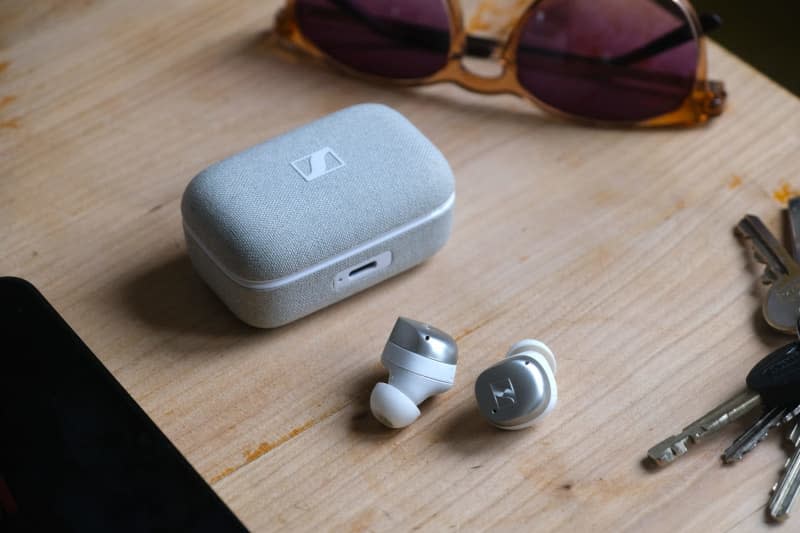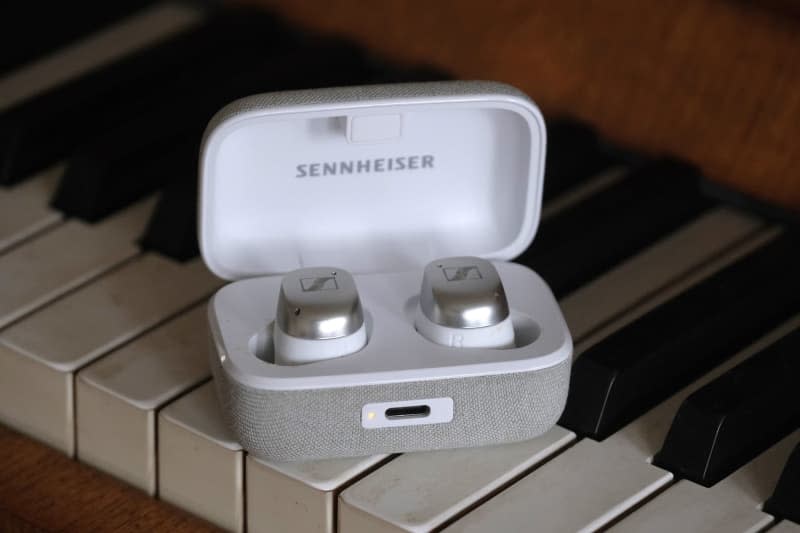Sennheiser's Momentum TW4 earbuds: Huge sound, huge case, huge price

Never before has the earbud market been this fiercely contested. Some brands have tried to stand out with an affordable price, others with a stand-out design.
Sennheiser, meanwhile, has been trying to offer the best all round package. For workouts, wearing for seven hours straight, listening to high-fidelity audio, blocking out noise - in all these settings Sennheiser aims to deliver reliable (if not always unbeatable) results.
The latest generation is more reliable than ever. It's just a shame that it comes at such a high price of €299 / $299.
One area where Sennheiser has pulled ahead of rivals is with its playback controls. Not all rival earbuds give you full options, but Sennheiser lets you skip forwards/back, change volume, pause/play, turn on your device’s digital assistant and turn on/off noise cancelling and transparent mode.
You control everything by tapping, which feels both fast and easy. In keeping with Sennheiser's approach, these controls are also reliable, and you rarely find yourself tapping accidentally.
Sennheiser has continued its optional wingtip design, and in addition to four silicone tip sizes, you can also swap out wingtips in a small or large size for a sturdier fit. This makes them potentially more useful during workouts.
In our tests, the earbuds with wingtips became uncomfortable to wear after half an hour, but this is a highly subjective area. Despite Sennheiser including various ways to adapt the size, the earbuds themselves are comparatively large, and may not fit smaller ears.
Top noise-cancelling, call quality and battery life
Sennheiser’s accompanying app lets you tweak sounds and how various taps control playback, among lots of other features. But out of the box, the listening experience already lives up to the price, offering a balanced sound, clear separation and a formidable but not overwhelming bass.
The transparency mode is lifelike, and apart from a distant hissing noise, it's easy enough to forget that you've left your earbuds in when nothing is playing.
The battery life has also improved, rising to 7.5 hours on a single charge (up from 5.5 hours in the last generation), while the case boosts total battery life to 30 hours (up from 22 hours).
Call quality is a hidden strongpoint of these earbuds, keeping your voice clear in noisy environments. The earbud’s anti-wind setting is great for joggers and cyclists, although you’ll need to open the app on your phone to activate it.
The active noise cancelling here is also among the best you can get from earbuds. While it doesn’t quite rival the current best in class, the Bose Quiet Comfort Ultra, it easily matches the likes of the AirPods Pro 2, keeping out traffic hums and toning down loud voices around you.
Multi-device pairing is a must for anyone who switches between a laptop and a smartphone. If you’re listening to music on one device, the earbuds will automatically switch to the other as soon as you get a call.
Drawbacks: Bulky design, no spatial audio
Sennheiser’s charging case is once again one of the largest of all flagship earbuds on the market. Its treasure-chest design with a fabric cover looks premium, but is a tight squeeze for anyone who likes to keep their earbuds in their trouser pockets at all times. Rivals like Bose, Samsung and Sony do better here.
The earbuds themselves meanwhile protrude out from the side of your head, and this isn't the kind of design you'd call discrete. Sony's WF-1000XM5 and Samsung's Galaxy Buds don't stick out so far.
Another possible drawback is the absence of spatial audio. Apple has managed to enhance the audio experience on AirPods by giving a stronger sense of space on certain remastered tracks on Apple Music, Tidal and Amazon Music, as well as on Netflix and Apple TV+ content. Sennheiser clearly doesn’t think buyers want this audio experience just yet - and perhaps they’re right: Spotify has yet to show signs it is planning to roll out spatial audio.
So are they worth it? The initial price of €299 or $299 is a big ask, especially considering that the price of the noise-cancelling champion, the Bose Quiet Comfort Ultra, as well as other high-end earbuds like Sony's WF-1000XM5, has fallen well below this.
Then again, there's plenty to be said for just how reliable these earbuds are. The possible disadvantages - the large size and no spatial audio - are highly subjective.
Before buying, it's worth looking at the previous generation, which has the same design with wingtips, as well as high-end aptX audio quality, water-proofing, wireless charging and pairing with two devices at the same time. With the €100 on top for the fourth generation, you are mostly paying for longer battery life and a higher dust protection rating (IP65).




